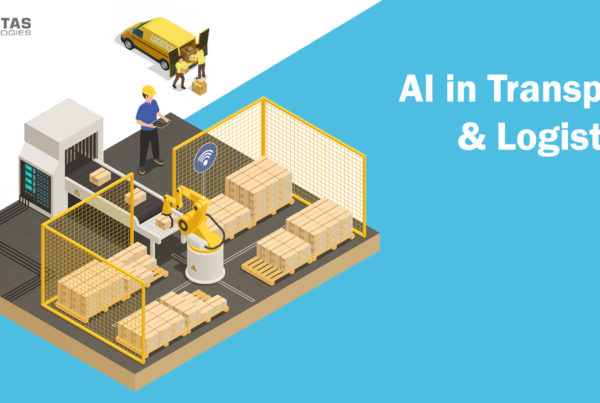
As per MarketWatch, the machine vision systems market is expected to reach a value of USD 13.53 billion by 2023. A majority of the demand is from the manufacturing space. Manufacturing firms use machine vision in assembly lines, high-speed production, hazardous environment, and inspection.
Different Types of Inspections
The manufacturing sector typically follows two types of inspections:
Manual Inspection
It is the process of human operators visually inspecting units during assembly. They typically rely on the naked eye or a microscope.
Automated Inspection
This includes computer vision and machine vision inspection. Computer vision is traditionally used to capture images and automate image processing for quality control and assurance. Machine vision inspection has some form of image capture hardware that can include feeding systems, optical systems, or separation systems and an integrated computer equipped with specialized software to process images and generate output.
A machine vision system can examine microscopic details and complete the inspection process with greater reliability, quicker speeds, and lesser error. But manual inspection has the capacity to use judgment, learn on the job, and manage variations.
Deep learning and AI can be integrated into machine vision. These technologies use neural networks that mimic human intelligence to distinguish anomalies, parts, and characters while tolerating natural variations in complex patterns. At the same time, they offer the speed and robustness of a computerized system.
Also, Read 7 APPLICATIONS OF MACHINE VISION
Challenges in Traditional Inspection
The inspection process identifies defects if any, and if the features of the product or the manufacturing process are as per specified requirements. This is done to prevent rework, damage to brand reputation, injury, fatality, loss of equipment, excess cost, or a loss of customers. Traditional inspection depends on manual labor, which is prone to burnout, errors, and subjectivity. Moreover, it is not easy to scale up manual quality control operations.
Conventional machine vision methods find it difficult to interpret the quality of complex scenarios. They do not possess the capability of humans to make adjustments and understand that variations do not necessarily mean defects. They cannot check for unanticipated defects. If they have to be customized for every scenario, there will be many parameters and thresholds. This can make the system unwieldy or prone to performance issues or even a breakdown.
Also, Read Automated Inspection with the help of Machine Vision and AI Technology
AI-based Inspection Helps To Overcome These Challenges
Artificial intelligence incorporates neural networks and algorithms such that the machine vision systems learn from the captured data and adjust their inspection capabilities without being explicitly programmed to perform certain tasks. AI-based inspection will be more accurate in measurements and alignments. It can work on different kinds of data like images, audio files, models, or documents. It can perform complex operations like reading challenging barcodes or comparing different textures.
How AI Optimizes the Inspection Process
A traditional machine vision system performs reliably and consistently by following the algorithms embedded within. But as the number of exceptions or types of defects increases, their effectiveness drops. Artificial Intelligence can make a difference here. The self-learning algorithms can distinguish anomalies from defects. They can adapt to tolerate natural variations. They are versatile enough to continue with the inspection process with added complexities or changes in shop floor processes. AI can optimize the inspection process by combining the flexibility of human inspection with the speed and reliability of automated inspection systems.
Also, Read ARTIFICIAL INTELLIGENCE (AI) VS MACHINE LEARNING (ML) VS DEEP LEARNING (DL)
Data Analysis from Multiple Sources
An AI-based machine vision system can be trained with thousands of data points so that it recognizes the difference between defects and accepted deviations. It can capture new data points (statistical data, images, etc.) to achieve extremely high and reliable identification rates. This can be used in defect detection and parts positioning. It can self-learn to identify features and classify data appropriately to enhance the assembly process and inspection process.
Automates the Data Capture and Reporting
AI-based machine vision systems capture large datasets of relevant information and minimal initial parameters for processing the data. They can churn such data and train and improve the maintenance and inspection algorithms. They can capture colossal amounts of structured and unstructured data, classify data, and tag data. This data and metadata are used for meaningful insights on the status of manufacturing equipment that enables companies to make decisions on maintenance, repair, or replacement. Appropriate data can be collected and used to check processes and detect defects. They can generate comprehensive defect reports and graphs on defects with details on pixel-level nuances or challenging optical character recognition and thus minimize errors in quality control systems.
Also, Read 3 Machine Vision Applications Solved by Artificial Intelligence
Conclusion
Machine vision systems will continue to evolve tremendously. AI will continue to be incorporated in machine vision systems for visual inspections that are more complex in nature like cosmetic inspection, texture-based classification, and variable feature location and characteristics. AI-based machine vision systems are also hyper-efficient in using the vast amount of data available with corporations. Machine vision systems will increasingly play a significant role in the manufacturing space as they support optimum productivity, improved flexibility, and better quality.
Register For Our Upcoming Free Webinar





